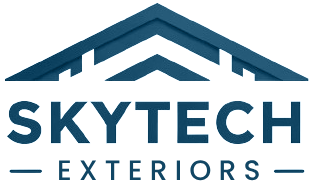How Can I Tell If My Roof Is Leaking?
Discovering a roof leak early is crucial for preventing
extensive water damage and costly repairs to your home. As a homeowner,
understanding the signs and symptoms of a roof leak can help you take prompt
action to address the issue. In this comprehensive guide, we explore how to
identify if your roof is leaking, common causes of roof leaks, potential
consequences of untreated leaks, and proactive steps to mitigate damage.
Signs That Your Roof May Be Leaking
Water Stains on Ceilings and Walls:
Water stains or discoloration on ceilings and walls are
telltale signs of a roof leak. These stains may appear as yellow or brown
patches and often indicate water seeping through the roof and into your home’s
interior.
According to data from the Insurance Information Institute
(III), water damage is one of the most common and costly claims made by
homeowners.
Dripping or Water Accumulation:
Noticeable drips or pooling water indoors, especially during
or after rainstorms, suggest an active roof leak. Check areas near light
fixtures, along walls, and in attic spaces for signs of moisture.
Mold or Mildew Growth:
Moisture from roof leaks creates ideal conditions for mold
and mildew growth. Look for fuzzy or discolored patches on walls, ceilings, and
attic surfaces, as well as a musty odor.
The Centers for Disease Control and Prevention (CDC) link
indoor mold exposure to respiratory symptoms and other health concerns.
Peeling Paint or Wallpaper:
Peeling or bubbling paint or wallpaper can indicate
underlying moisture issues, possibly caused by roof leaks. Inspect walls and
ceilings in rooms directly below the attic or roof.
Visible Roof Damage:
Inspect your roof for visible signs of damage, such as
missing, cracked, or curling shingles, damaged flashing around chimneys or
vents, or debris accumulation that can block water drainage.
Common Causes of Roof Leaks
Cracked, curled, or missing shingles can expose the
underlying roof structure to moisture infiltration. Asphalt shingles can
deteriorate over time due to exposure to sunlight and weather elements.
According to the National Roofing Contractors Association
(NRCA), damaged shingles are a leading cause of roof leaks in residential
homes.
Faulty Flashing:
Flashing around chimneys, vents, skylights, and roof valleys
seals gaps and prevents water penetration. Damaged or improperly installed
flashing can compromise the roof’s waterproof barrier.
Research by the Insurance Institute for Business & Home
Safety (IBHS) highlights that improper flashing installation contributes to a
significant number of roof leak claims.
Clogged Gutters and Downspouts:
Debris buildup in gutters and downspouts prevents proper
water drainage from the roof, leading to water backup and potential roof leaks.
The U.S. Environmental Protection Agency (EPA) recommends
regular gutter cleaning to prevent water damage to roofs and homes.
Consequences of Untreated Roof Leaks
Structural Damage:
Prolonged exposure to water can weaken roof decking,
rafters, and insulation, compromising the structural integrity of your home.
FEMA (Federal Emergency Management Agency) emphasizes the
importance of addressing roof leaks promptly to prevent potential collapses
during severe weather events.
Interior Damage and Mold Growth:
Water infiltrating through roof leaks can damage ceilings,
walls, and insulation, requiring extensive repairs and potentially exposing
occupants to health risks associated with mold and mildew.
According to the American Society of Home Inspectors (ASHI),
untreated roof leaks contribute to indoor air quality issues and costly
remediation efforts.
Increased Energy Costs:
A compromised roof’s insulation and ventilation can lead to
energy inefficiency, resulting in higher heating and cooling costs as your HVAC
system works harder to maintain indoor comfort.
The Department of Energy estimates that inefficient roofs
can account for up to 25% to 35% of heat loss in homes, impacting overall
energy consumption.
Proactive Steps to Identify and Address Roof Leaks
Regular Inspections: Schedule annual roof inspections by a
qualified roofing professional, and after severe weather events such as storms
or hurricanes.
Prompt Repairs: Address minor roof damage or leaks promptly
to prevent them from escalating into costly repairs or structural issues.
Maintain Gutters and Downspouts: Keep gutters clean and free
of debris to ensure proper water drainage away from the roof and foundation.
Recognizing the signs of a roof
leak and understanding its causes are essential for protecting your home from
water damage, mold growth, and structural deterioration. By staying vigilant
with roof inspections, addressing issues promptly, and investing in
professional maintenance, you can prolong your roof’s lifespan and safeguard
your home’s value. Consult with a reputable roofing contractor if you suspect a
roof leak or notice signs of water infiltration. Remember, early detection and
proactive maintenance are key to preserving the integrity and longevity of your
roof.


